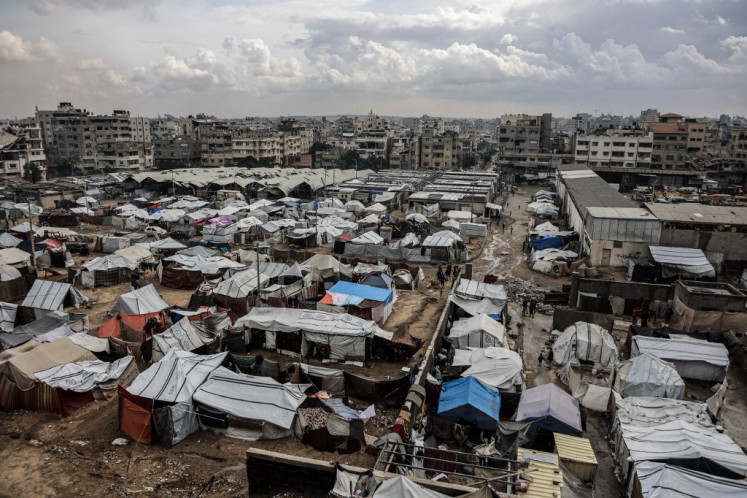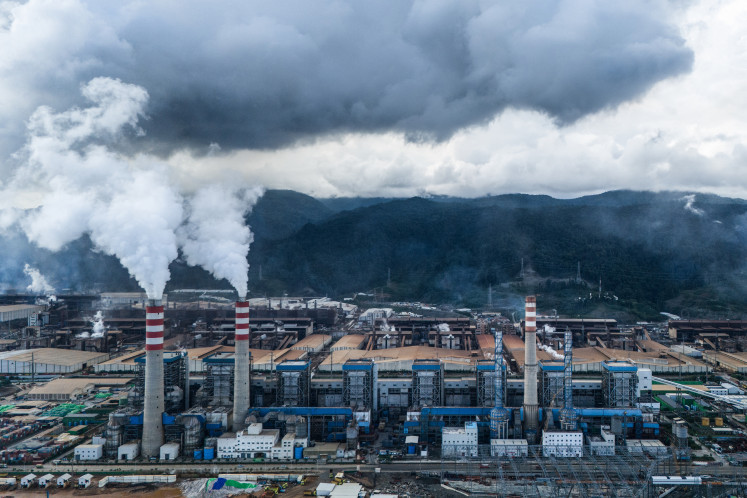Popular Reads
Top Results
Can't find what you're looking for?
View all search resultsPopular Reads
Top Results
Can't find what you're looking for?
View all search resultsBringing people closer to solve traffic woes
Getting old on the road: Heavy congestion occurs along Jl
Change text size
Gift Premium Articles
to Anyone
G
span class="caption">Getting old on the road: Heavy congestion occurs along Jl. Sudirman, South Jakarta. Due to a poor transportation system, a housing backlog and soaring property prices, most people living in Greater Jakarta often spend more than an hour to reach their workplaces.(JP/PJ. Leo)
It takes Martiyanti, a 30-year-old resident of Depok, West Java, two hours to reach her office in Kebon Sirih, Central Jakarta.
“I usually rush going back from the office as it takes time to reach my house,” she said.
Martiyanti, who moved to Depok after her marriage several years ago, said a two-hour commute was common for her as she traveled by train. “I’m usually dropped off by my husband or take an angkot [public minivan] or motorcycle taxi to the train station,” she said.
She added that she had to walk more than 1 kilometer or take a motorcycle taxi to reach her office from the station.
She said when looking for a house, the main concern was affordability. “The price of a decent house near the city or [train] station is incredibly high,” she said.
A decent house or an apartment near public transportation costs at least Rp 500 million (US$38,305).
Martiyanti said although it took hours to reach her house, she did not dream of moving to a better location.
Due to a poor transportation system, a housing backlog and soaring property prices, most people living in Greater Jakarta often spend more than one hour to reach their workplaces.
Taking public transportation does not make life easier for commuters as not all residential areas are close to public transportation and people commonly have to take at least three modes of transportation to reach their destinations.
A report by the Institute for Transportation and Development Policy (ITDP) presented at the Habitat III summit in Quito, Ecuador, showed that Jakarta and its satellite cities of Depok, Tangerang, South Tangerang, Bogor and Bekasi provide decent public transportation for only 16 percent of the 28 million population.
“Sixteen percent is the number of those who live within 1 kilometer from the rapid transit system,” ITDP country director Yoga Adiwinarto said.
The capital had a better score for Jakarta’s 10 million population, with 44 percent living near rapid transit access points. “What we call rapid transit systems are the bus rapid transit [BRT] and commuter train,” he said.
Yoga said the ITDP suggested the government increase density in areas near the public transit network. “Expanding public transportation is also a good solution but harder to do. It is better to focus on developing areas near public transportation,” he said.
The problem is, for people like Martiyanti, the price of property near public transportation is beyond reach.
The government should give incentives to developers to guarantee the availability of affordable housing near public transportation, Yoga said.
“The government could allow a bigger floor area ratio for developers that provide mixed-use and mixed-income buildings near public transportation,” he said, adding that mixed-use buildings were those that offered housing and offices while mixed-income were the tenants.
“A new development near a transit point should also be pedestrian- and bicycle-friendly, less accessible for cars and have fewer parking spaces.”
Jakarta is currently developing a number of public transportation systems, including the MRT and light rapid transit (LRT), as well as expanding the BRT, or busway.
However, the development plan for vertical density near stations, known as the transit oriented development (TOD) concept, has yet to be realized.
Suharto, planning director at the Greater Jakarta Transportation Agency (BPTJ), established last year to better manage transportation in Greater Jakarta, said the concept of TOD had been included in the Greater Jakarta Transportation Master Plan (RITJ).
He said the government would encourage developers to develop areas near public transportation, but made it clear that it could not force developers to provide affordable housing.
“Hence, we will try to fulfill the transportation needs of all residents regardless of house location,” he said.
Intiland Development corporate secretary Theresia Rustandi said her company was not focusing on developing areas near public transportation.
She said, however, when the company developed land near public transportation, it gave added value to customers.
“Our South Quarter project in TB Simatupang [South Jakarta], for example, will be within walking distance of an MRT station,” she said, adding that the price of office space in the building had increased because of the MRT station.










